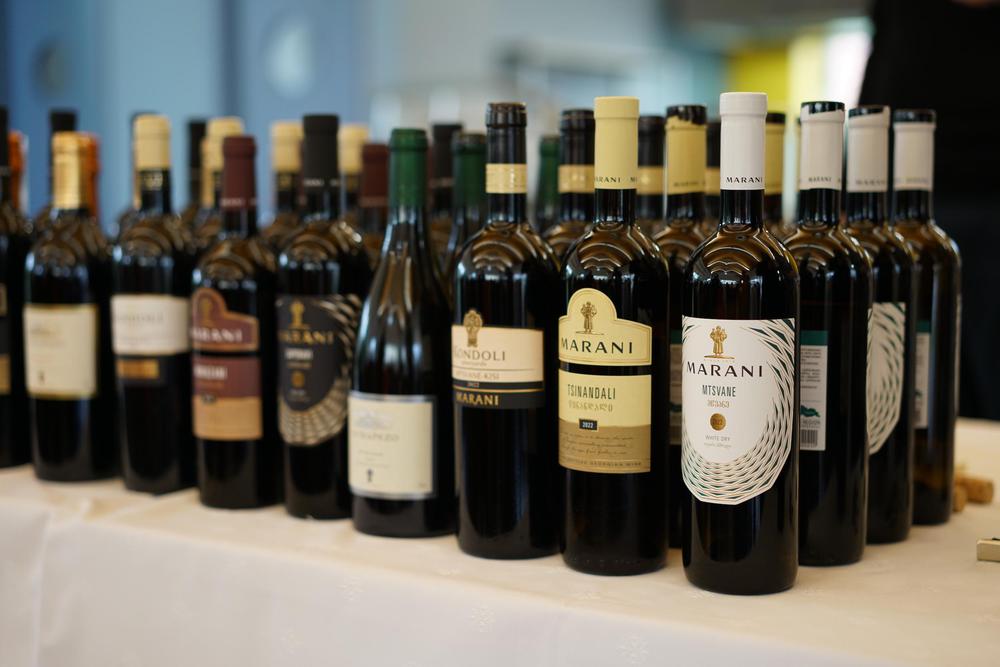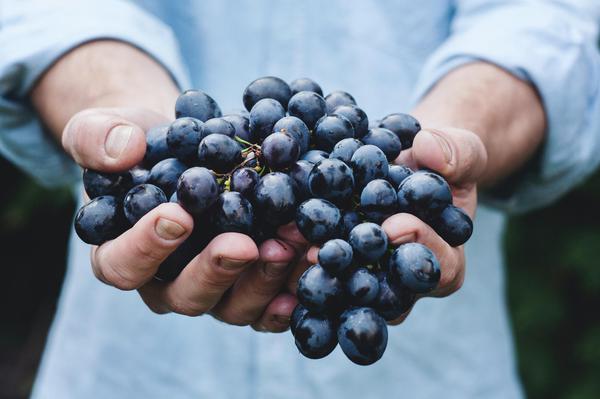Georgian fortified wine, a distinctive category of wine, is known for its unique flavor profiles and historical significance. This article delves into various types of Georgian fortified wines, examining their production methods, characteristics, and international recognition. Ideal for travelers and wine enthusiasts, this exploration offers an insightful glance into the rich wine culture of Georgia.
The Essence of Georgian Fortified Wine
Fortified wine in Georgia represents a blend of tradition and rich taste. These wines are produced by either complete or incomplete fermentation of grape must or pulp, with the addition of alcohol-containing distillation products like brandy or pure ethyl alcohol. This process results in a diverse range of fortified wines including port, vermouth, sherry, Madeira, Marsala, and various dessert wines.
Key Varieties and Their Characteristics
Anaga
This Madeira-style wine is crafted from Khikhvi, Mtsvane, and Rkatsiteli grapes, predominantly grown in Gurjaani, Dedoplistskaro, and Sighnaghi. Exhibiting colors ranging from pale golden to dark amber, Anaga has an alcohol content of 19%, sugar content of 4%, and a titrated acidity ranging between 3-7 grams per liter (g/L). It features a strong, peculiar bouquet and a harmonious taste with distinct Madeira touches.
Kardanakhi
An amber-colored, port-style wine from the Kardanakhi vineyards in Gurdzhaani district. Made from Rkatsiteli grapes, it matures in oak barrels for three years. The wine boasts an 18% alcohol content, 10% sugar, and a titrated acidity of 4-6 g/L. It is known for its specific bouquet and honey fragrance.
Kolkheti
Originating from Western Georgia, Kolkheti is a vintage white port-style wine made from Tsitska and Tsolikauri grapes. It has an 18% alcohol content, 7% sugar, and a titrated acidity of 3-7 g/L. The wine's amber color and harmonious taste make it a preferred choice for many.
Lelo
A golden-colored port-style wine from Tsitska and Tsolikauri grapes grown in Baghdati, Zestaphoni, Terjola, and Vani. Lelo has a fruity taste and aroma, with an alcohol content of 19%, 5% sugar, and 6 g/L titrated acidity.
Marabda
Made from Rkatsiteli grapes in Bolnisi and Marneuli, this port-style light-golden wine has a fruity taste and aroma. It contains 19% alcohol, 5% sugar, and 6 g/L titrated acidity.
Sighnaghi
This port-style amber-colored wine is made from Rkatsiteli grapes grown in Kakheti’s Sighnaghi district. It is known for its distinctly fruity taste.
Taribana: A port-style wine from Rkatsiteli grapes in Kakheti, Taribana has 19% alcohol, 5% sugar, and 5 g/L titrated acidity.
Veria
An amber-colored port-style wine made from Chinuri, Mtsvane, and Rkatsiteli grapes in Eastern Georgia. Veria has an 18% alcohol content, 7% sugar, and a titrated acidity of 3-7 g/L.
International Recognition and Awards
Many of these Georgian fortified wines have garnered international acclaim. For instance, Kardanakhi has won 8 gold and one silver medal, Anaga has been awarded a silver medal, and Veria has received a gold medal at international wine competitions. These accolades underline the quality and appeal of Georgian fortified wines on the global stage.
Enjoying Georgian Fortified Wine
The proper consumption of fortified wine enhances the tasting experience. These wines can be served warm or chilled, between 10 to 18 degrees Celsius. Holding the glass by the stem prevents warming from body heat. Small sips are recommended to fully appreciate the flavors. Fortified wines are versatile, often served with complex dishes or as aperitifs and digestives.
Delving Deeper: Production and Vineyards
The Art of Making Georgian Fortified Wine
The production of Georgian fortified wine involves a meticulous process that contributes significantly to its distinct flavors. For instance, the Anaga wine, a top-quality Madeira-type, is made from Rkatsiteli, Khikhvi, and Mtsvane grape varieties. These grapes are cultivated in specific districts like Gurjaani, Sighnaghi, and Dedoplistskaro, and the wine is aged for at least three years in oak barrels under strong sun exposure.
Similarly, Kardanakhi, a renowned white port-type wine, is produced from Rkatsiteli, Khikhvi, and Mtsvane Kakheti grapes grown in the Kakheti region. This wine undergoes a unique aging process, first for 1.5 years in an open-air area, followed by 3 years in a basement, contributing to its distinct honey and freshly baked bread crust tones.
The Role of Specific Regions and Vineyards
The production of these wines is closely tied to the geographic and climatic conditions of their respective regions. For example, Kolkheti, often referred to as Georgian cognac, is made from Tsolikauri and Tsitska grapes cultivated in Western Georgia. Marabda, another popular variety, is produced solely from Rkatsiteli grapes grown in the Kartli region's Bolnisi and Marneuli districts.
Each region imparts its unique characteristics to the wine, influenced by factors like soil quality, climate, and traditional wine-making techniques. This deep connection to the land is a hallmark of Georgian wine culture.
Accolades and Historical Significance
These wines are not only popular for their taste but also for their historical significance. For example, the SAAMO wine, a strong white vintage variety made from Rkatsiteli, Mtsvane, and Khikhvi grapes, has been produced since 1929 and has won multiple international medals. Similarly, the SALKHINO dessert liqueur wine, made from Isabella and Tsolikauri grapes, has been produced since 1928 and has earned international recognition.
Technical Specifications
Understanding the technical aspects of these wines is crucial for connoisseurs. The alcohol content in these wines ranges from 15% to 19%, with sugar content varying significantly, reflecting the diversity in taste and style. The titrated acidity, an important factor in the wine's taste profile, typically ranges from 3 to 7 grams per decimeter cubed (g/dm³), equivalent to 3-7 grams per liter (g/L).
Pairing with Georgian Cuisine
These wines offer a perfect complement to the rich and diverse Georgian cuisine. The sweet and robust flavors of fortified wines like Anaga and Kardanakhi beautifully pair with hearty Georgian dishes, enhancing the dining experience. Whether it's alongside a complex main course or as an accompaniment to a sweet dessert, Georgian fortified wines provide a harmonious balance to the meal.
Tourism and Global Appeal
The growing interest in Georgian fortified wines has also contributed to the country's tourism industry. Wine tours and tastings are popular activities for visitors, offering an immersive experience into Georgia's wine-making heritage. The global appeal of these wines is evident in their international awards and recognition, drawing wine enthusiasts from around the world to explore Georgia's rich viticultural landscape.
The International Wine Market
Georgian fortified wines hold a unique position in the international wine market. With their distinct taste profiles and rich history, these wines offer a refreshing alternative to more commonly known European fortified wines. Their success in international competitions underscores their quality and appeal, helping to solidify Georgia's reputation as a producer of world-class wines.
In conclusion, Georgian fortified wines are not only a testament to the country's rich viticultural history but also a significant contributor to its cultural identity and tourism industry. Their unique flavors, coupled with their historical and cultural significance, make them an essential experience for any wine enthusiast or traveler exploring Georgia. As these wines continue to gain recognition on the global stage, they represent the enduring legacy and evolving future of Georgian winemaking.


 Pairing Wine & Cuisine
Pairing Wine & Cuisine
 Georgian Red Wine
Georgian Red Wine
 Georgian White Wine
Georgian White Wine
 Georgian Amber Wine
Georgian Amber Wine
 Georgian Sparkling Wine
Georgian Sparkling Wine





